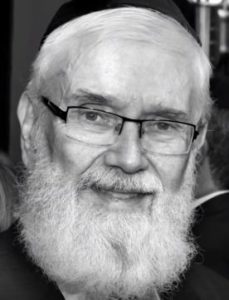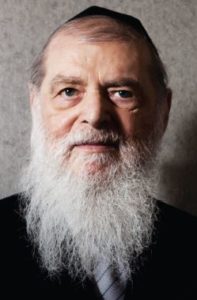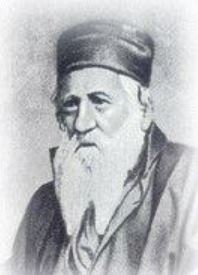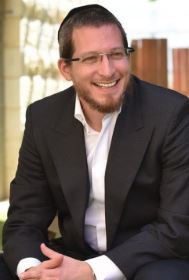The ArtScroll Revolution

Rabbi Meir Zlotowitz
Meir Yakov Zlotowitz (1943-2017) was born in New York to Orthodox Jewish immigrants from Poland. He showed an affinity for art from a young age, and after graduating from yeshiva (and receiving his rabbinic ordination), he co-founded ArtScroll Studios. Originally, the company produced artfully-decorated pamphlets, posters, ketubot, and scrolls. In 1975, a close friend of Rabbi Zlotowitz passed away shortly before Purim. The rabbi decided to honour his friend by composing a new translation and commentary on Megillat Esther within the shloshim, the first 30-day period of mourning. Rabbi Zlotowitz worked day and night for 30 days, barely eating or sleeping at all. When he was done, he produced a beautifully-designed and intellectually in-depth edition of the Book of Esther. It was an instant hit, and quickly sold 20,000 copies. The success of the publication made Rabbi Zlotowitz realize he could do the same for other Jewish holy texts. He went in search of a partner who could work with him, and found the perfect person:

Rabbi Nosson Scherman
Nosson Scherman (b. 1935) was born in New Jersey to a traditional family and originally attended public school. He went to a Jewish after-school program and was inspired to go to yeshiva several years later. Scherman became a rabbi, first worked as a school teacher, and then became principal of Yeshiva Karlin Stolin. He wrote the introduction to Rabbi Zlotowitz’s Megillat Esther, then joined him full time at ArtScroll. The partners had little money and set up the Mesorah Heritage Foundation to help finance their work. Under their leadership and wisdom, ArtScroll has produced over 700 titles and some 2000 volumes, including possibly the world’s most popular Chumash, and the entire Talmud (a whopping 73-tome set). This Talmud was the product of over 70 scholars working together from all over the world, and for many it is the go-to version of Talmud today. It has allowed thousands of regular people to learn and love the Talmud, in clear English and with insightful commentaries. ArtScroll has been credited with revolutionizing Jewish study, and with helping to facilitate the massive baal teshuva movement in recent decades, inspiring the return of countless Jews to their faith and traditions. Despite being in his 80s, Scherman continues to helm ArtScroll, producing ever more beautiful and enlightening Jewish books.
Purim Begins Tonight! Chag Sameach!
15 Purim Facts Every Jew Should Know
Words of the Week
It’s amazing how much you can accomplish when you don’t care who gets the credit.
– Gertrude Elion


 Rabbi Menachem Bombach was born in the ultra-Orthodox Satmar community of Meah Shearim in Jerusalem. His father passed away when he was just a toddler, and Bombach was raised in a very insular environment. Despite living in Israel, he spoke no Hebrew at all until he was 20 years old. Bombach had a sharp mind, though, and studied at some of Israel’s most prestigious yeshivas, including the famous Mir Yeshiva. When he got married and sought to find a job, he realized that he knew very little and was completely unprepared for adult life. Despite protests from his family and community, Bombach pursued secular studies. He learned Hebrew and English, earned a BA in Education, and then a Master’s from Hebrew University. To make sure other young Ultra-Orthodox men do not struggle like he did, Bombach decided to start a new kind of yeshiva, one where secular studies are given equal weight to religious studies, and students are prepared for future careers and financial independence. Encouraged and inspired by
Rabbi Menachem Bombach was born in the ultra-Orthodox Satmar community of Meah Shearim in Jerusalem. His father passed away when he was just a toddler, and Bombach was raised in a very insular environment. Despite living in Israel, he spoke no Hebrew at all until he was 20 years old. Bombach had a sharp mind, though, and studied at some of Israel’s most prestigious yeshivas, including the famous Mir Yeshiva. When he got married and sought to find a job, he realized that he knew very little and was completely unprepared for adult life. Despite protests from his family and community, Bombach pursued secular studies. He learned Hebrew and English, earned a BA in Education, and then a Master’s from Hebrew University. To make sure other young Ultra-Orthodox men do not struggle like he did, Bombach decided to start a new kind of yeshiva, one where secular studies are given equal weight to religious studies, and students are prepared for future careers and financial independence. Encouraged and inspired by